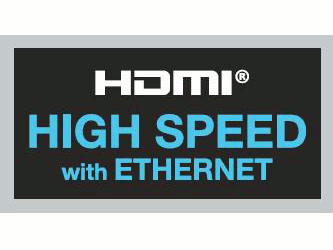Which HDMI Cable Should I Buy?
March 02, 2015
HDMI is a real triumph for convenience in home theatre and home audio setups. It’s a single cable solution that can carry high-quality video, high-quality audio, and data ranging from command controls for the devices in your home theatre setup to high-bandwidth, high-speed ethernet signals. Where wiring a display and a simple audio setup with a Blu-ray player could take between eight and ten cables to connect without HDMI, you only need two HDMI cables to get the same job done. It’s a much cleaner, much more modern approach.
How to choose your HDMI Cable
HDMI has also cracked the worst part of the USB puzzle: due to having a unique shape with a clearly defined top and bottom, the cables only go in one way. That doesn’t mean you’ll seat the cable the first time: any non-reversible cable will always be the wrong way around the first time you try to plug it in. We hereby dub this “Loewen’s Law”.
So where are the pitfalls with HDMI cables? There are a few things to watch out for.
Fragility
We’ve already covered this in-depth in a blog and a video, but HDMI cables can be a bit fragile; the connector, when pressure is applied in the wrong direction (laterally) can pull free from the internal cabling. That renders your cable unusable.
Standards
 There are currently four standards for HDMI
There are currently four standards for HDMI
- Standard Speed
- Standard Speed with Ethernet
- High Speed
- High Speed with Ethernet
At this point it can be hard to find the first two on that list. While they’re still useful for legacy gear, the cost difference between is negligible. The difference that you will find is that standard and standard with ethernet can generally be found at smaller gauges, with more slender wires. Standard cables are becoming less useful in a post-Standard Definition world: with more devices sharing an internet connection, the ethernet data channel is an important addition, and moving to high speed is becoming more essential. High Speed with Ethernet cables are capable of supporting resolutions of 4K+, as well as carrying more colour data for panels that can use it.
With a minimal cost difference between standard and High Speed with Ethernet HDMI cables, our recommendation is to future-proof your installation by spending the extra few dollars to get the right cable now.
Marketing
This can be a bit of a sore spot for a number of integrators and retailers out there, because cables are easy margin. If you’re not aware, margin is the difference in price between cost and how much the item is sold for; in a nutshell it’s the profit on a given product.
Almost everyone out there knows that for a run from your TV to your Blu-ray player that the $300 [brand redacted] cable isn’t necessary. That said, we’re not doing a lot of 3’ TV-to-Blu-ray runs. Even so, when compared to flashy store brands, there are some workhorse HDMI cables out there that offer equivalent performance at a fraction of the cost. They’re not $6 each, but when you’re running upwards of 50’, you’d imagine your cable should probably cost a touch more than the shorter lengths.
The latest trend in cabling is actually a useful one: including integrated circuits in the cable terminators. That sounds fancy, but it’s a smart way to get your signal from your source to your destination without interference or distortion. Digital signal failure is easily identifiable: the image can block out or will simply fail entirely. In some cases you’ll get an error message indicating failure, or implying that the High Definition Copyright Protection can’t be verified on one or both ends of the connection. By moving to a cable that has data validation through integrated circuits built in, you can have a longer, thinner cable. We still recommend running HDMI to an HDMI extender and then running CAT6 in-wall, but there are times when you’ll want an HDMI-based solution; this is it.
Over the last ten years we’ve done countless installations with longer than average HDMI runs. Unfit cables–either too slender to pass signal through over those distances or too susceptible to interference–can and will cause failure.
Our recommendation
We don’t integrate with bargain-basement cables, and we don’t recommend “gas-injected dielectric” boutique cables either. For our clients we choose robust, CL-2-rated High Speed with Ethernet HDML cables. We believe that overpriced interconnect isn’t customer-friendly, and we steer clear of it: we use the right type and the right length of HDMI cables for each part of a system. We believe our craftsmanship stands up for itself.
As listed above, we recommend opting for the highest specification cable–High Speed with Ethernet–which isn’t necessarily the most expensive one. While the boutique cable brands offer some nice features–well, one nice feature: they’ll upgrade your cable if it ever becomes obsolete–you can buy dozens of cables for the same price as one of theirs, making the gesture a bit moot. By opting for the highest specification now, in a cable of relatively high quality (durable, CL-2 compliant) you’ll ensure that you’re ready to use your cable anywhere, for anything. That’s a smart use of your money, and a great way to get more value for your dollar.
- Crestron Home Reviewed: Seamless Integration, Exceptional Control - March 19, 2025
- Do I need a Control System? - March 20, 2024
- Your Smart Home is Only as Good as Your Integrator: The Importance of Superior Aftercare - May 10, 2023